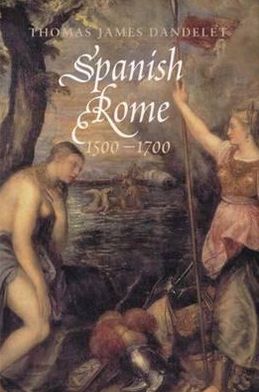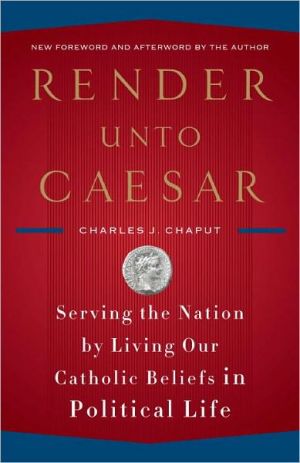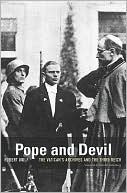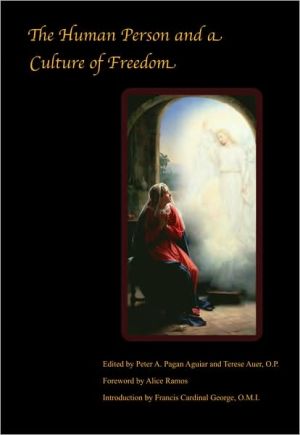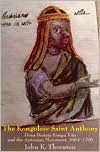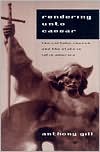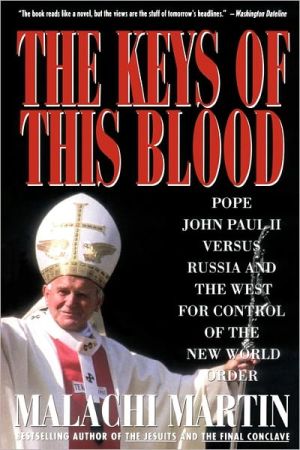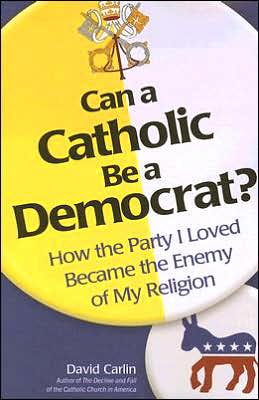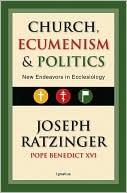Spanish Rome, 1500-1700
Spanish Rome, 1500-1700 won the Sixteenth Century Studies Conference Roland Bainton prize for best new book in history and theology in 2002. \ "In the sixteenth and seventeenth centuries, Rome was an aged but still vigorous power while Spain was a rising giant on track toward becoming the world's most powerful and first truly global empire. This book tells the story of the meeting of these two great empires at a critical moment in European history. Thomas Dandelet explores for the first time...
Search in google:
Rome was an old but vigorous remnant of its ancient imperial glory, rich in religious authority; Spain was a rising giant on the road to becoming the world's first modern global empire, rich in New World gold. Dandelet (history, U. of California-Berkeley) tells the story of interaction between the two empires during the 16th and 17th centuries. Annotation c. Book News, Inc., Portland, OR (booknews.com) Carlos Eire A painstaking reconstruction of a world that has been ignored for far too long. A pioneering achievement.
SPANISH ROME 1500-1700\ \ By THOMAS JAMES DANDELET \ YALE UNIVERSITY PRESS\ Copyright © 2001 Yale University\ All right reserved.\ ISBN: 0-300-08956-2 \ \ \ \ Chapter One\ FOUNDATIONS \ LONG before Alexander VI was elected pope in 1492, Ferdinand and Isabella had been consolidating their power in southern Italy and insinuating themselves into the political life of Naples and Rome. More specifically, from 1480, the time they began supporting the church of San Pietro in Montorio, the young monarchs were also creating an image of themselves as strong allies of Naples and defenders of Rome.\ That year the Turkish threat to Rhodes and southern Italy helped establish the primary overlap between the interests of the Catholic Kings and those of Italy and the popes. Ferdinand wanted to protect his realm of Sicily and the interests of his family in Naples, where his sister Juana was queen. In addition, he and Isabella started to represent themselves as loyal protectors of the church. It was important to them that the policies of their court were seen as adhering to those of Rome. Stability in southern Italy and strong relations with Rome went hand in hand.\ The idea of an Italian league that bound the papacy and the Spanish monarchy as allies, a feature of Spanish policy throughout the two centuries that followed, was already under way by 1481. In that year Ferdinand and Isabella sent two squadrons of ships, one from Castile and one from Aragon, to aid in a naval battle against the Turks. The Battle of Otranto was actually won before the Spanish ships arrived, but the point of Spanish support for papal Mediterranean policy was made. A letter from Ferdinand written immediately before the battle summed up his idealized dedication to the defense of Rome. Sending instructions to his ambassador, Cardinal Luis Juan de Mila, he emphasized that all Christendom had cause to be concerned by the threat of a Turkish invasion of Italy since Rome as well as Naples was thereby endangered. The archbishop of Toledo himself had pledged to go to Rome with other Spaniards to help protect the city, according to the king.\ Similarly, Ferdinand made it clear from early in his reign that he also considered himself responsible for the defense of Naples. He went so far as to write to his sister the queen, stating that he considered their kingdoms "to be one" and that he would continue to work in their defense as though they were "his own." This brotherly love may not have moved the queen or her husband, King Ferrante, as much as Ferdinand hoped, but it was a clear and honest expression of the Spanish monarch's attitude toward Naples. He already saw it as part of his own kingdom and was ready to fight for it. Indeed, Ferdinand appears never to have completely accepted King Alfonso's earlier decision to divide the Aragonese kingdoms and give the Kingdom of Naples to Ferdinand's cousin Ferrante upon Alfonso's death in 1458.\ Given their desire to have both Rome and Naples as strong allies, Ferdinand and Isabella also sought to avoid the constant threat that the interests of the two would collide. Even more ominous was the possibility that the pope would ally himself with the French, thereby opening the way for an invasion of Naples by the Most Christian King, who had his own claims to the kingdom. Active and persistent diplomacy was essential. Ferdinand made a point of sending envoys and ambassadors constantly shuttling around Iberia, Naples, Sicily, and Rome. He subsequently became a critical player on the Italian scene in the last decades of the fifteenth century, with Rome as the center of his diplomacy.\ In 1482, for example, he helped mediate a peace treaty between Naples and the papacy. Writing to his special ambassador, Juan de Margarit, following the treaty, he urged him to go to Pope Sixtus IV, the cardinals, and the people of Rome and assure them that it was the desire of his court to support the papacy. Moreover, the ambassador was to kiss the pope's feet both as a sign of the king's filial obedience and in thanks for the love, trust, and honor that the pope had bestowed on the Spanish monarchs.\ In 1485, Ferdinand was again compelled by political interests to intervene between a pope and his brother-in-law. Pope Innocent VIII Cibo and King Ferrante had clashed when the new pope challenged the Aragonese right to Naples and encouraged a revolt of the nobility there. Since the right of Aragonese succession was also a particularly delicate matter for Ferdinand, he sought the intervention of Cardinal Rodrigo Borgia as intermediary. Rodrigo successfully helped to negotiate a peace between the two powers in 1486.\ With these smaller interventions serving as a prelude, in the early years of the reign of Alexander VI the Spanish monarchs made their most important moves into Roman and Neapolitan affairs through a number of treaties and alliances. In 1493 Ferdinand and Alexander signed the Treaty of Barcelona, which granted the pope's sons Cesare and Juan the bishopric of Valencia and title of duke of Gandia, respectively. In exchange, the pope promised to refuse to acknowledge the French king's claims to Naples and to ally himself with the kings of Naples and Spain against any such encroachments. This last condition became a traditional element of Spanish policy in Rome, and it underlined the intertwined nature of Roman and Neapolitan political strategies.\ The French threat proved real in late 1494, when Charles VIII of France surprised virtually all Italy with the famous invasion that Guicciardini later condemned as the beginning of the end of an Italian Golden Age. While this last claim was largely rhetorical (particularly in the case of Rome), the conflict did initiate a series of wars between the French and Spanish monarchs for control of Italy that lasted for the next sixty-five years. It also led to a formal alliance, the Holy League of 1495, between the papacy, Spanish monarchs, Emperor Maximilian, and Venice. The success of the league in driving Charles VIII out of Italy almost as quickly as he had entered gave Ferdinand and Isabella a leading role in Italian affairs for the first time. It also allowed the Spanish monarchs to gain a military foothold in Naples and deepen their claim as critical protectors of the papacy. At the same time, it provided the first extensive military experience of a holy league binding Spanish monarchs and the papacy.\ All was not bliss, however, between the Spanish monarchs and Alexander VI. Rather, Pietro Martire's dire prediction about the danger of Alexander's love of his family above all else proved true: in 1499 the pope happily agreed to a marriage between his son Cesare, who had given up religious life, and the sister of the king of Navarre, a marriage sponsored by the king of France. The military implications of the marriage were clear: the new king of France, Louis XII, would become allied to the papacy, and the two would support each other's claims in Italy. This action predictably enraged Ferdinand and Isabella, leading to a vehement exchange of insults between their ambassador, Garcilaso de la Vega, and the pope.\ Eventually, the ever shrewd and skillful Alexander VI worked out a series of appeasements that gave the Spanish monarchs widespread economic powers over the church in their realms. And in 1500 a treaty was negotiated that led to the partitioning of Naples between France and Spain. In short, the Borgia pope and his son had succeeded in playing the two major European powers off against each other while gaining advantages from both. This gave them a good degree of autonomy - not to mention wealth and military power - which they used to make their imprint on the city of Rome. Although it was a dynastic imprint above all else, it was a distinctly Spanish dynastic imprint, and it set a precedent for inscribing Spain and Spaniards into the myth of Rome, a precedent that would have long-lasting implications.\ ALEXANDER VI AND THE ROME OF THE BORGIAS\ A wealthy, well-educated, and sophisticated Renaissance patron, Cardinal Rodrigo Borgia had already built a fine palace in Rome before he was elected pope. Although relatively little is known about his household during his long period as cardinal, it is clear that his wealth from the revenue of his Spanish churches made him increasingly prominent in the court of Rome in the 1470s and 1480s. Self-conscious and proud of its role as the center of classical antiquity, Christian and pagan, by the 1490s papal Rome rivaled Florence as the urban center of cultural and intellectual production. Rome, in short, had embraced the Renaissance ideal of renewal to the extent that by 1500 it had become "the undisputed queen of literary and intellectual life in Europe."\ This was Cardinal Rodrigo Borgia's Rome, and, not surprisingly, as soon as he became pope he began working to have his family woven into the historical and artistic fabric of Europe's greatest city. A patron of artists and men of letters, he thus contributed to a tradition of writing and painting Spain into the history of Rome both past and present that would increase over the centuries with the Spanish monarchs. This was a well-established Roman tradition by the time of Alexander VI, and most of the oldest Roman noble families, such as the Colonnas and Orsinis, claimed an ancient Roman lineage. For such families, to celebrate and memorialize Roman antiquity was to celebrate themselves.\ For the Borgia family, however, this meant going even deeper into the Roman past than the period of the republic, empire, or Christian empire. Rather, Alexander, whose ties to the city were more recent and tenuous, required excavations and literary evocations of the ancient heroes and giants who had made their way to Italy and Spain from Egypt. This was the period in which Renaissance scholars enamored of Egypt "rediscovered" Italian and Spanish foundations. Foremost among such scholars in the Borgia court was Annius of Viterbo.\ A Dominican priest known for his knowledge of ancient languages, theology, and archaeology, Giovanni Nanni, or Annius of Viterbo (1432-1502) as he came to be known, was made a Master of the Sacred Palace by Alexander sometime in the 1490s. As a courtier valued for his "scholarship," Annius, more than any other writer, provided the raw materials for the creation of a Borgia family myth that gave Alexander VI an ancient lineage worthy of a Renaissance prince.\ Annius's best-known work was a set of commentaries on supposedly ancient texts published under the patronage of the Spanish ambassador in Rome, Garcilaso de la Vega, father of the famous poet of the same name. It was dedicated to the Catholic Kings in 1498 with the papal stamp of approval. The Commentaria super opera diversorum auctorum de antiquitatibus was, in fact, based largely on Annius's own forgeries. Foremost among these was a text attributed to the ancient Babylonian historian Berosus of Chaldea.\ Drawing on the authority of this priest and other "sources," Annius constructed a history of Europe that began with Noah and his sons. The Commentaries thus had as much in common with the sacred histories of the Middle Ages as with new Renaissance commentaries based on authentic classical texts. Unlike medieval chronicles, however, the Commentaries was a polytheistic sacred history that took the Egyptian gods seriously. Thus Osiris, Isis, the bull Apis, and Hercules join Noah and his sons as central players in Europe's history.\ The "history" created by Annius provided Alexander VI with a largely symbolic link to the foundational period of sacred and heroic beginnings in Europe. More specifically, the Borgia family found its genealogical connection to antiquity through the myth of Noah, Isis, Osiris, and Apis. As recounted by Annius, the myth provided an irresistible symbolic match with the heraldic image of the bull that had been a part of the Borgia coat of arms for at least two centuries.\ To recall the central aspects of the myth as told by Annius, Osiris was the son of the biblical Noah, also known as Janus. Having made his way to Italy from Egypt with his son Hercules, Osiris succeeded in civilizing the tribes inhabiting Italy before he returned to Egypt. Back home, Osiris was killed by his brother Typhon, but was resurrected as the bull Apis. Meanwhile, Hercules and his mother, Isis, defeated Typhon, and Hercules went on to wage war against Typhon's followers and various others in North Africa and Europe.\ Significantly for Spanish and Italian connections, Hercules became king of Spain, succeeding his uncle Tubal, another son of Noah and the first king of Spain. He then moved on to Italy to make various conquests there. In the Annian scheme of things, the kings of Spain thus traced their lineage to Tubal and Hercules and were related to the founder of the Borgia line, Osiris. This clearly made the Borgia branch part of the family tree of the Spanish monarchy. Just as the pope had sought a marriage alliance between his son Juan and a cousin of the Catholic Kings in 1493, so too did Annius forge a marriage of family myths. The myth of Osiris, Apis, and Hercules accomplished this perfectly, as did the history of the Spanish monarchy that he included in his Commentaries. To add one more sacred connection, Noah, or Janus, was also credited with first settling the Janiculum Hill in Rome, thus prefiguring the popes and presumably providing yet another reason for Spanish patronage on the hill.\ The degree to which this wild merging of biblical, Egyptian, and European creation stories was actually believed and incorporated into either the Borgia family history or the history of the Spanish monarchs is impossible to determine. The idea that Noah's son Tubal was the first king of Spain was already a part of earlier Spanish chronicles, such as that of Isabella's courtier Diego de Valera (1482). But Annius does appear as a source for various other later Spanish histories, as we shall see in chapters to come. Still, whether Annius ever made a literary genealogy for the Borgias that overtly stated these connections is simply not known.\ It is widely held by art historians, however, that the Osiris origin myth of the Borgia family was immortalized in a painted genealogy created by one of Alexander's most famous court painters, Pinturicchio. Presumably using the Annian "history" as the basis for the artistic program he chose for the decoration of the Borgia apartments of the Vatican palace, Pinturicchio created a syncretic swirl of Egyptian and Christian stories that covers the walls and ceiling of the Vatican room known as the Sala dei Santi.\ One of the centrally located reception rooms in the six-room Borgia apartment, the Sala dei Santi takes its name from the wall paintings, which depict lives of the saints.\ \ Continues...\ \ \ \ Excerpted from SPANISH ROME 1500-1700 by THOMAS JAMES DANDELET Copyright © 2001 by Yale University . Excerpted by permission.\ All rights reserved. No part of this excerpt may be reproduced or reprinted without permission in writing from the publisher.\ Excerpts are provided by Dial-A-Book Inc. solely for the personal use of visitors to this web site. \ \
.List of MapsAcknowledgmentsA Note on CurrencyIntroduction1Ch. 1Foundations16Ch. 2Charles V and the Spanish Myth of Rome34Ch. 3The Roman World in the Age of Philip II53Ch. 4The People of Spanish Rome109Ch. 5The Piety of Spanish Rome160Ch. 6Urban VIII and the Decline of Spanish Rome188Ch. 7Spanish Revival and Resilience, 1650-1700202Conclusion215Epilogue219Notes221Index265
\ Anthony PagdenMagnificent.\ \ \ \ \ Carlos EireA painstaking reconstruction of a world that has been ignored for far too long. A pioneering achievement.\ \
